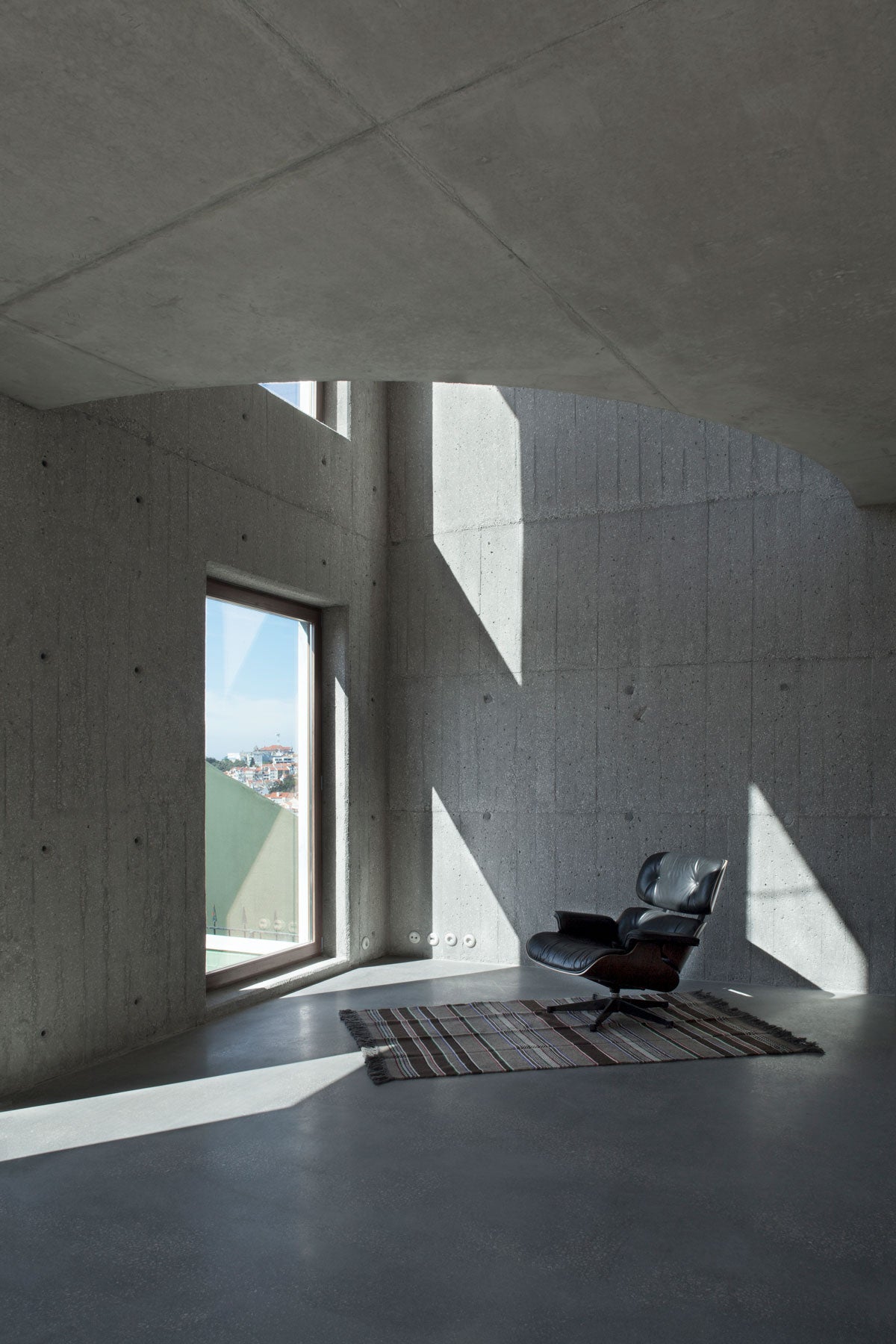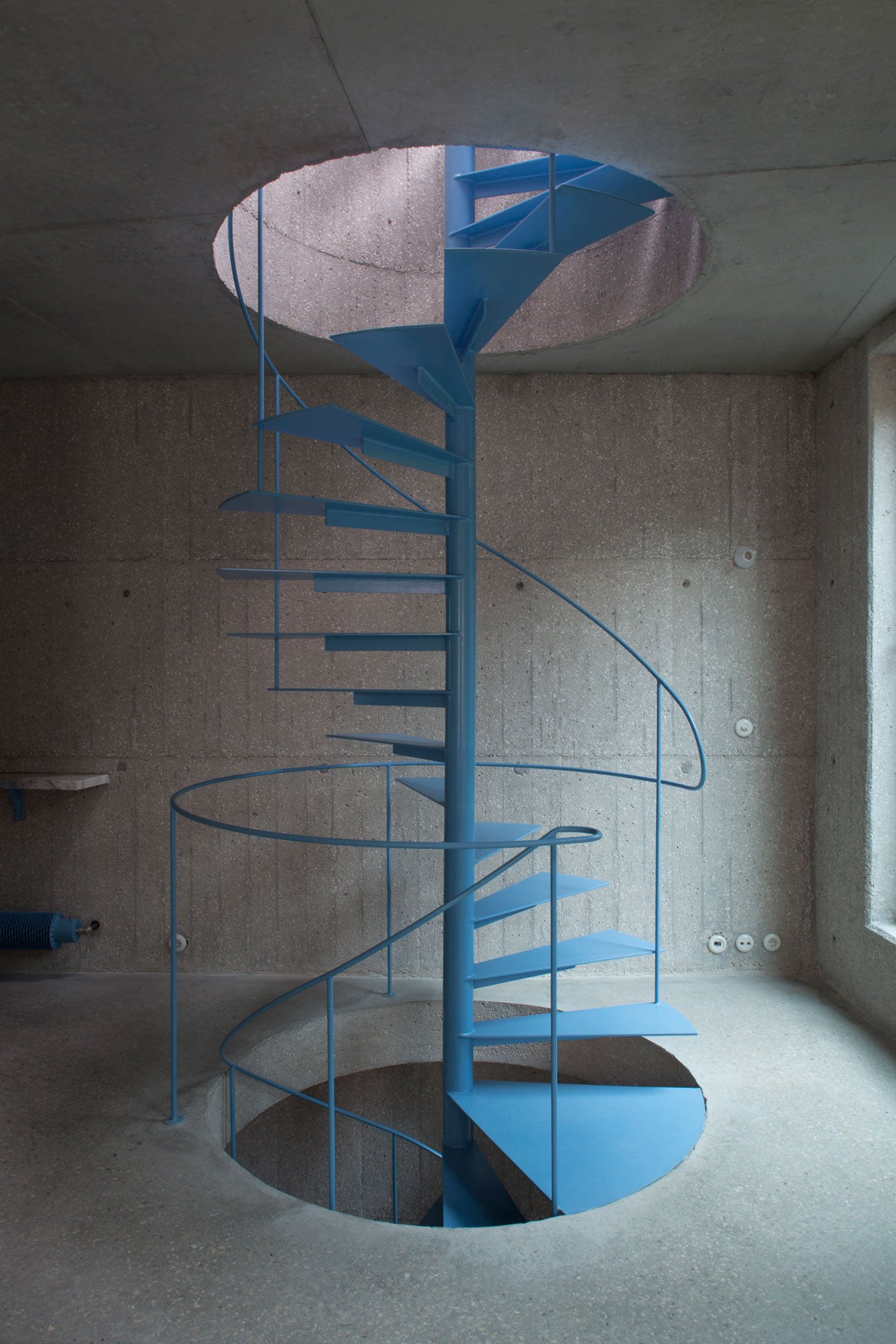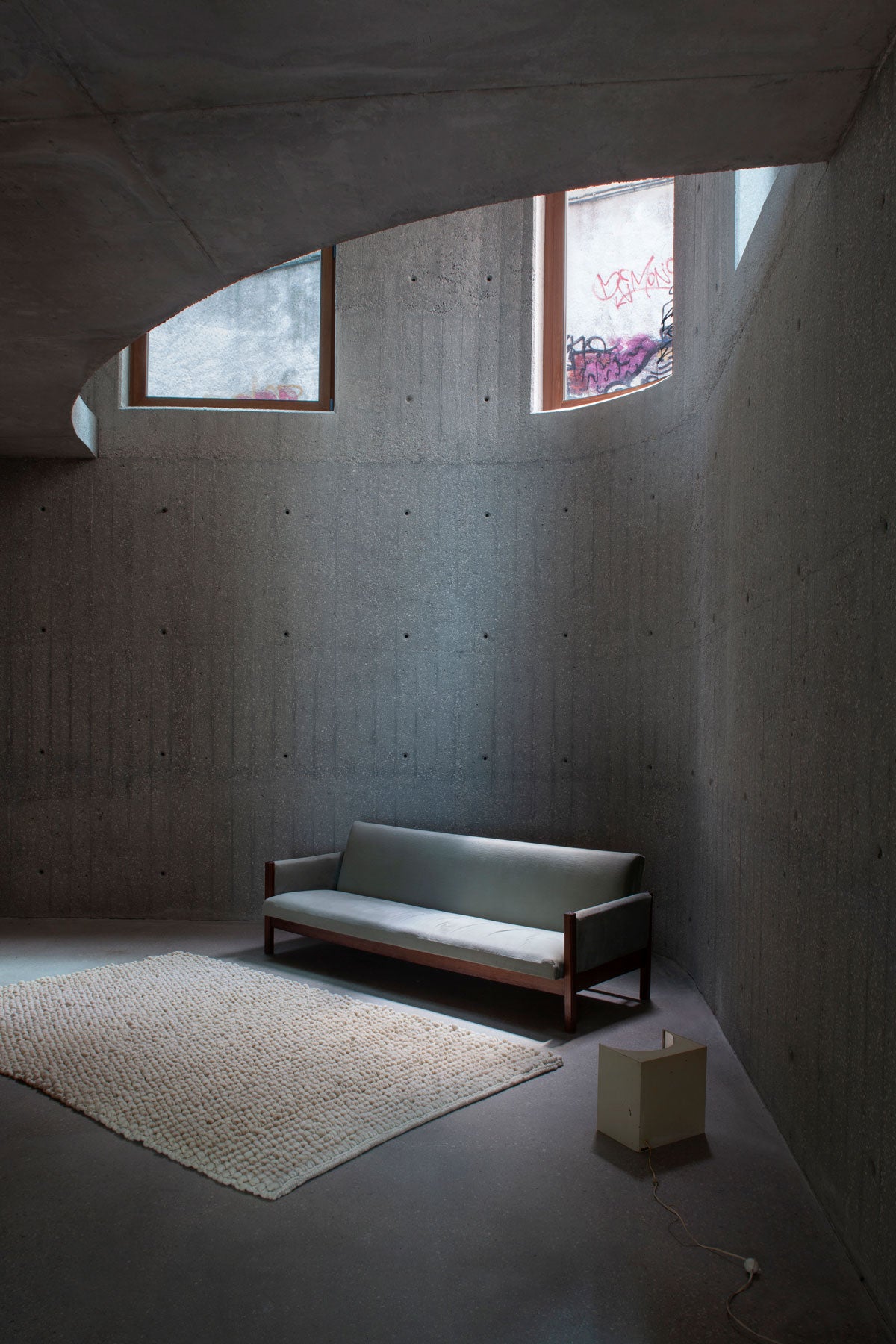Architecture has taken the path of simple, low-cost, low-impact on the environment constructions, and strong minimalistic and brutalist trends adorn the landscape. Could it be that we can stop the speed at which life moves these days through simplicity?
In 1147, the Nossa Senhora do Monte Chapel was established in Lisbon, Portugal, commanded by St. Augustine. Centuries later, in 1755, it had to be rebuilt after an earthquake; today, it is a historical site located on a hilltop and surrounded by abandoned houses. The Leopold Banchini Architects firm traveled from Switzerland to the Portuguese capital with the purpose of taking the ruins of a building in the area back to life in order to turn it into Casa do Monte: a family home and an ode to design.
The house was made with raw materials, and concrete was left exposed; the pink and white marble came from the nearby quarry at Estremoz and was used for the interior; the big rock slabs create walls, floors, and shelves, thus reducing details to the minimum; and for the divisions, light fabric curtains were employed. The purpose was to create a space that would allow for breathing and communication between floors, creating a seamless environment.

Each floor has a central core, which contains the basic needs: beds, shower, and kitchen. A large living space avoiding divisions; however, it has sliding wooden doors to create closed bedrooms, as needed. The chimney set in the curvy marble on the ground floor heats up the rock core in each space.
A roofed patio offers an outdoor living room with views of the Lisbon sky and its walls are cladded with tiles (local product). The connection between all floors is given through a metal spiral staircase that reaches the terrace: it rises with white marble, joined by a swimming pool surrounding the building and an infinite view of the city.












